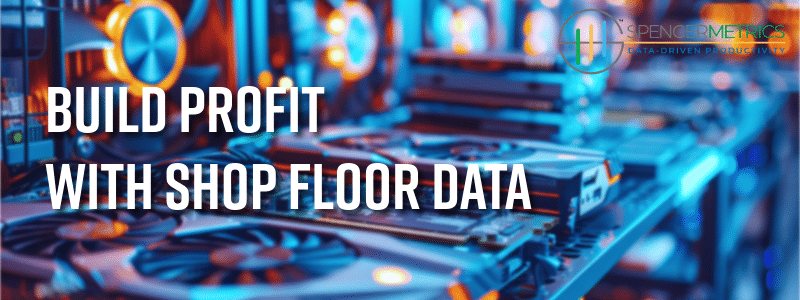Standing at the crossroads of print industry tradition and transformation is exhilarating. The modern shop floor is not just about machines, ink, and substrates but also the data captured in the machines and processes. In that data lies an untapped potential to redefine profitability and drive long-term success.
At SpencerMetrics, we’ve seen firsthand how capturing shop floor data and converting it into actionable insights empowers our customers to achieve more than they ever thought possible. More than improving efficiency—it’s about creating a more innovative, intelligent, resilient operation capable of thriving in a competitive and ever-changing market.
The Shop Floor is a Goldmine of Data
Every press, every job, every shift—your shop floor is a treasure trove of information. Unfortunately, we often find that this valuable data remains underutilized. Without the tools to effectively capture and analyze it, businesses miss out on opportunities to identify inefficiencies, optimize workflows, and improve profitability.
For example, imagine you’re running multiple shifts, but not every shift is running efficiently or productively. Without accurate data, it’s impossible to pinpoint why one shift outperforms another. Is it the operator? The complexity of the jobs? The setup time? When you don’t know the answer, you can’t address the problem. But when you capture and analyze the data, patterns emerge, and with them, solutions.
Turning Insights into Impact
The value of shop floor data isn’t in its collection; it’s in its application. Data becomes truly powerful when it’s transformed into actionable insights—and those insights are then shared across the organization. From the press operator to the CEO, everyone benefits when data drives decisions.
For example, when operators can see how their performance compares to benchmarks, they can make real-time adjustments and take ownership of their work. If they don’t understand why their performance isn’t what it should be, they can take the data to their mentors and managers to identify corrective action specific to their needs. Management can identify bottlenecks, allocate resources more effectively, and make informed decisions about investments in equipment or training. The result? A leaner, more efficient operation where every team member is aligned toward shared goals.
The Profitability Equation
Efficiency is just the beginning. When you optimize your processes and reduce downtime, the impact on your bottom line is immediate and measurable. But the benefits don’t stop there. By leveraging data to enhance productivity and minimize waste, you’re also reducing costs—and in a business with tight margins, those savings add up fast.
Capturing shop floor data isn’t just about cutting costs; it’s about generating revenue. A well-run shop floor means faster turnaround times, better quality control, less rework, and more capacity to take on additional work. That’s the kind of value that clients notice—and reward.
Building a Sustainable Future
In an industry increasingly focused on sustainability, leveraging shop floor data is also critical to achieving environmental goals. By optimizing resource utilization and reducing energy consumption, you’re not just saving money—you’re positioning your business as a responsible and forward-thinking partner for eco-conscious clients. It’s a win-win for profitability and the planet.
The Time to Act Is Now
The print industry is at a turning point, which is true no matter what segment you serve. Those who embrace data-driven operations will lead the way, setting new standards for efficiency, profitability, and sustainability—those who don’t risk falling behind.
At SpencerMetrics, our mission has always been to help print businesses unlock their potential. We believe in the power of data not just as a tool but as a transformative force. When you capture the correct data, share it with the right people, and act on it confidently, the results speak for themselves.
The future of print production is here, and data powers it. Are you ready to take the leap? Let’s start the conversation today.

